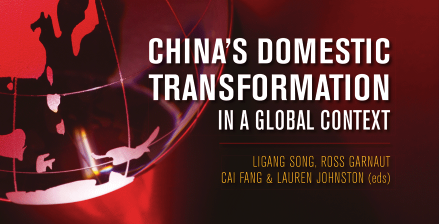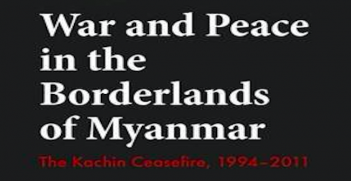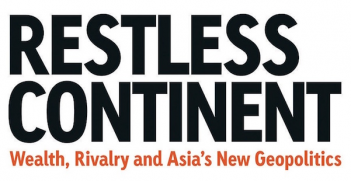Reading Room: China’s Domestic Transformation

The latest book in the ANU’s longstanding China Update series concentrates on the structural changes within China’s ‘new normal’ model, given the fact that China has been experiencing a substantial slowdown in its economic growth. Each chapter in this book offers domestic insight and global context focusing on one or more areas in China’s economy in which changes are required or ongoing. According to the authors, institutional change, economic performance and policy reform are parts of the complex process of transition through which China is seeking to make its way from a middle-income to a high-income modern economy and a developed country.
This book has two main parts. The chapters in the first section explore and examine China’s domestic transformation and structural change and those in the second provide analyses of China’s participation in global integration.
In the first part of the book, the sectors and areas discussed include monetary policy, foreign banks in China, destination consumption, energy markets and electricity sector. China’s monetary easing, a policy shift since 2014, has been important for short-term stability as well as to provide a congenial context for economic reform for the new model of growth. In terms of destination consumption, China’s vast pool of migrant workers is still an untapped consumer potential area, which means a reform in the hukou residency registration system is crucial. The subsequent chapters in the first section discuss the options for accelerating reform and opening the banking sector, the efficiency of the coal, gas and gasoline markets, the liberalisation of the gas market and the complicated challenges in the electricity industry. In addition, the first part also discusses the effects of China’s economy on the global resources sector by arguing that the period in which China’s growth dominated world demand for energy and metals and lifted global commodity prices to unprecedented levels has come to an end.
In the second section of this book, the authors mainly discuss China’s engagement in global integration. Some authors argue that a successful Chinese transition towards higher consumption and lower savings should reverse the impact on the high-income economies supporting China’s old model of growth. Other authors examine and analyse capital account liberalisation in China, the offshore Renminbi currency market and internationalisation, manufacturing performance and industrial competitiveness, investment in other countries and foreign investments’ impacts on economic growth, trends in the foreign investment legal system and trade negotiation strategies.
China’s new model of economic growth is described by the government and others as the ‘new normal’ under which the economy is going to retain a relatively high-speed growth rate, while the country concentrates on its quality. This means that the country is experiencing a persistent economic update by focusing on the supply-side reform and innovation-driven model. This new model for China’s economic growth is also a reassurance to the world about the health and vitality of the Chinese economy.
In conclusion, this book offers a comprehensive review of China’s new model of economic growth and, in particular, its participation in global integration as well as providing in-depth and detailed analysis of specific areas of China’s economy.
Ligang Song, Ross Garnaut, Cai Fang and Lauren Johnston, China’s Domestic Transformation in a Global Context, ANU Press, 2015, ISBN 9781925022681
The book is available for free download
Leyang Wang is studying for a Bachelor of International Relations and International Security at the Australian National University and is a former intern of the Australian Institute of International Affairs.





